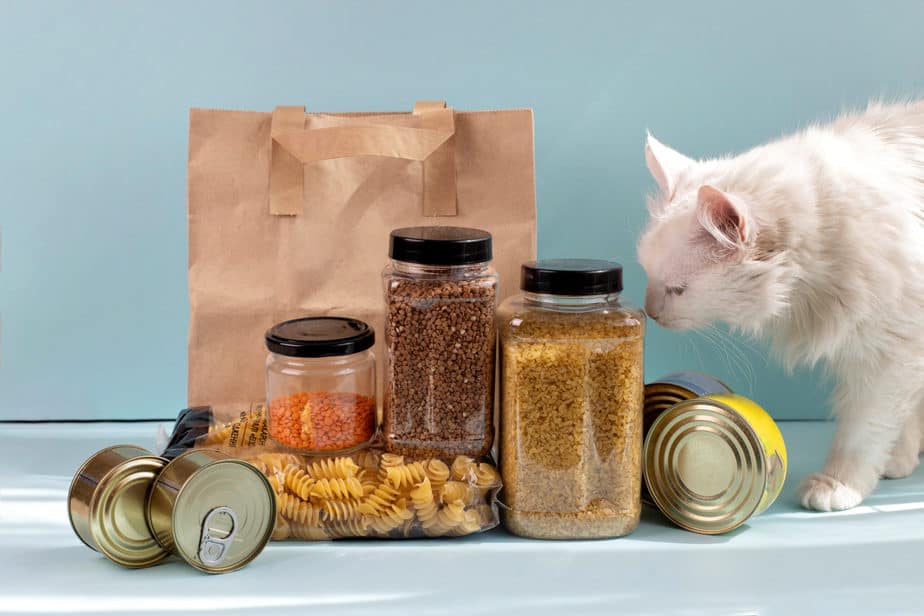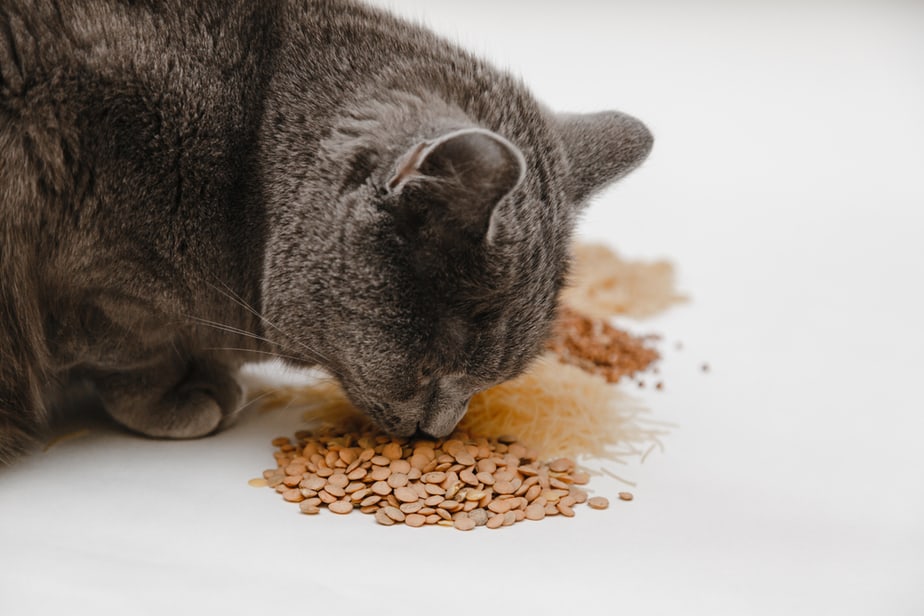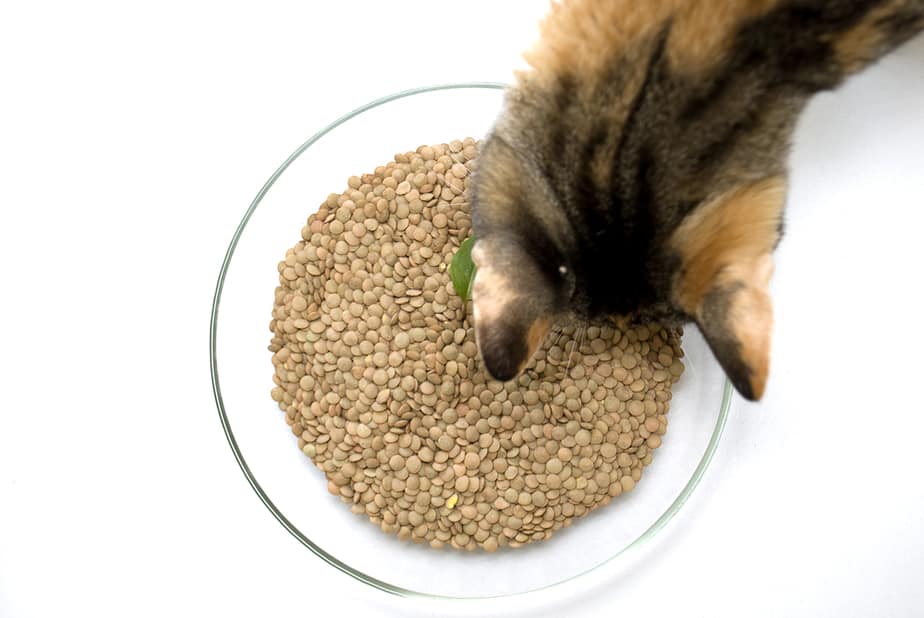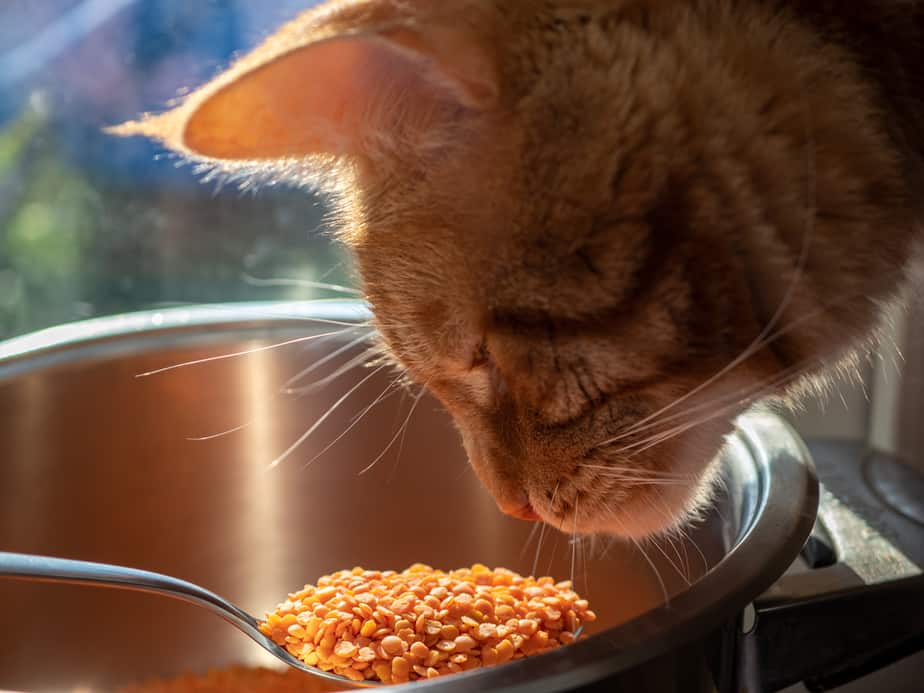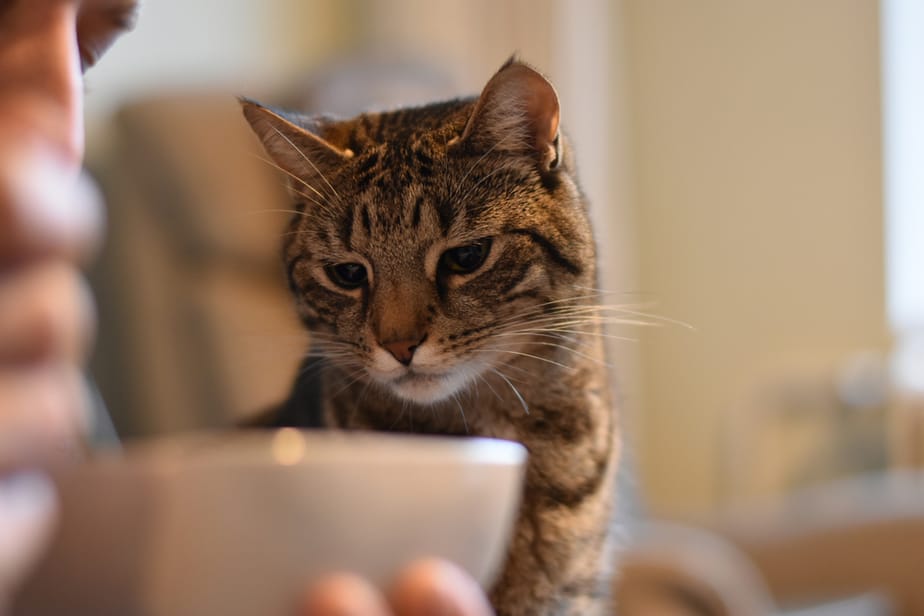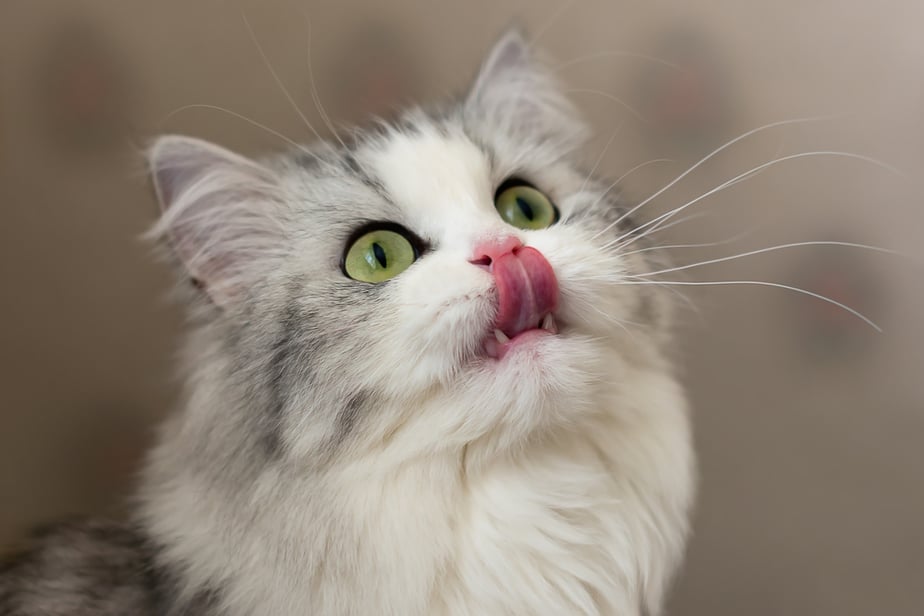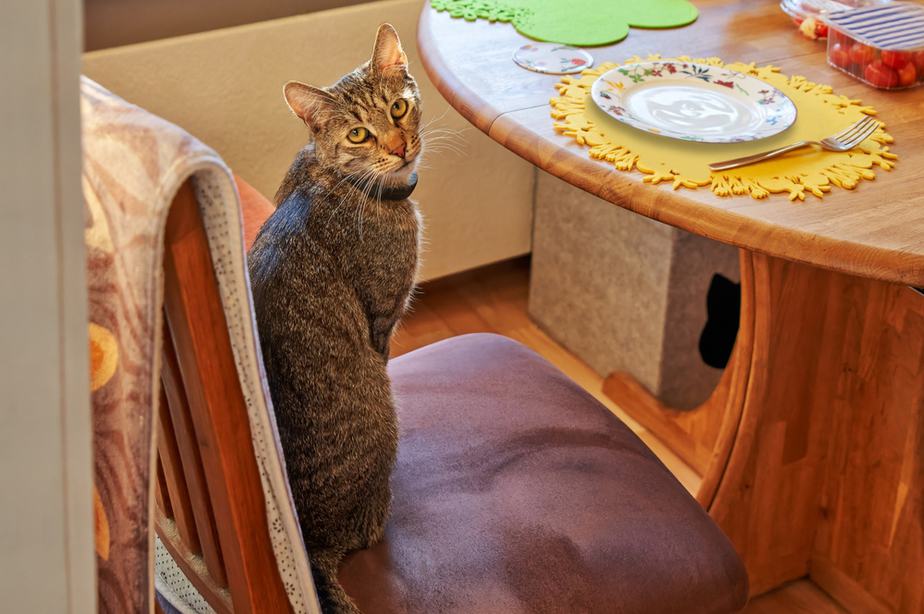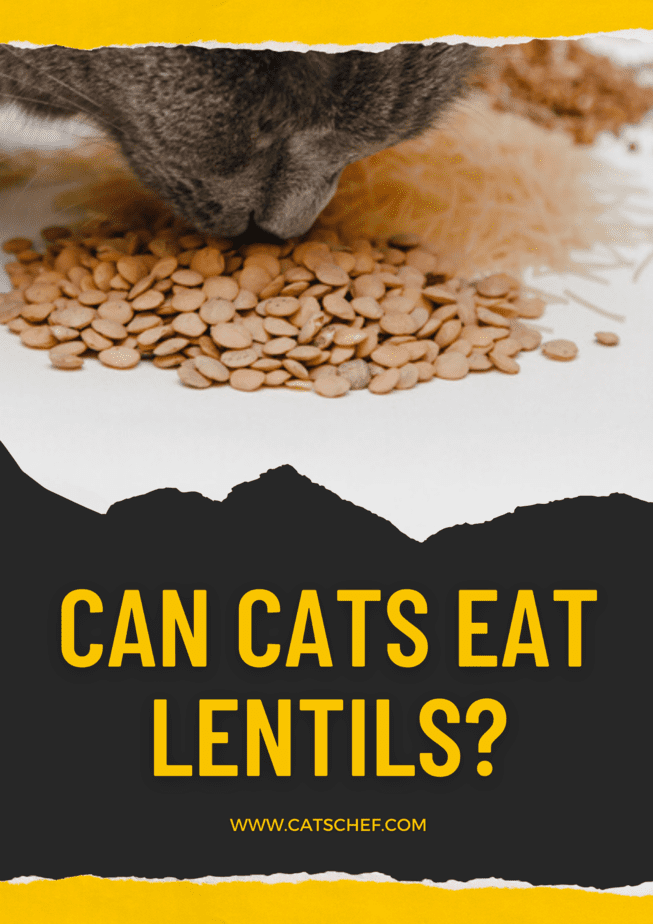📖 Table of Content:
Lentils are edible legume seeds. They’re known for their lens shape and can be bought with or without their outer husk. If they are edible to humans, then can cats eat lentils too?
When you see lentils, your first thought might be beans. While from the same family, legumes, they are significantly different from each other in both physical appearance and nutritional value.
If you have a furry friend that’s always eager to try out new foods, you will want to know whether lentils are safe for cats. Because lentils are a common ingredient in meals, this means your pet may come across these legumes frequently, so you’ll always need watchful eyes with these stealthy creatures.
Are lentils safe for cats to eat?
Cats are obligate carnivores, meaning they must eat meat to thrive. That said, lentils have a variety of nutrients that can be useful to them.
If you must feed lentils to your cat, do it only once or twice a week. Lentils shouldn’t be a primary source of nutrition for your cat.
More importantly, always give your cat lentils in moderation. That’s the only way to keep your cat safe from some of the typical side effects of plant-based meals.
Health benefits of lentils
These legumes are high in protein and fiber, and have a low-calorie count. B vitamins, magnesium, zinc, and potassium are all abundant in lentils.
But don’t get ahead of yourself just yet. Excessive amounts of lentils can have an adverse effect on your feline.
Protein content
Lentils contain more than 25% protein, making them a great meat substitute. They hold the first place in having the most protein of any vegetable food known to man.
So, if you want to provide extra protein to your cat alongside her meaty meals, lentils are a great option.
Cells, tissues, organs, and muscles are all made up of proteins. This nutrient is also known for its hunger-suppressing properties. This is because protein-rich foods make you feel fuller for longer.
As a result, feeding lentils to your cat is a terrific way to keep track of the meals she eats and keep her weight in check. Although lentils can be a good animal protein replacement, that isn’t to say grains should completely replace your cat’s need for animal-derived protein.
Legumes as a occasional treat are okay, with an undisturbed main diet.
Dietary fiber in lentils
Lentils are also high in dietary fiber. Although cats can live without fiber in most cases, fiber-rich foods may offer them several benefits. Fiber, especially insoluble fiber, aids digestion by giving a cat’s stools more weight, allowing her to empty her intestines more regularly.
As a result, adding lentils to your cat’s diet may aid in the relief of digestive issues such as constipation. Fiber and protein also work together to keep your feline feeling fuller for longer.
Fiber-rich foods can also aid the growth of your cat’s intestinal flora.
Antioxidants found in lentils
Last but not least, lentils are rich in polyphenols such as procyanidin and flavanols. Polyphenols are powerful antioxidants that can help to prevent many chronic diseases, such as heart disease, feline arthritis, and cancer.
The polyphenols in lentils may also help to lower blood sugar levels; however, how they do so is yet unknown.
Great source of vitamins
Nutrients such as folate, as well as vitamins B1, B3, B5, and B6, are abundant in lentils. So, if you want your cat to obtain more of these vitamins, adding a few lentils to her standard meals may prove beneficial.
Lentils, in particular, are high in folate (folic acid) and vitamin B3. Folic acid is necessary for regular metabolic operations and the creation of red blood cells. Niacin (vitamin B3) is required for good skin health and blood circulation throughout the body.
Thiamine (vitamin B1) is a water-soluble vitamin that cats require for optimal carbohydrate metabolism. Various vestibular indications, vision loss, incoordination, and other clinical signs can be symptoms of thiamine deficiency in cats.
Pantothenic acid (vitamin B5), is also a water-soluble vitamin. This acid is a nutrient that’s required for survival as cats need it to make coenzymes. Felines need pantothenic acid to make and digest proteins, carbs, and lipids.
Cats can and should eat lentils because of minerals
Lentils are a great source of minerals such as iron, zinc, magnesium, potassium, manganese, and copper. Iron, for example, aids in creating red blood cells. That way, certain health conditions like anemia can be prevented.
Zinc is one of the most vital nutrients for keeping a cat healthy. But, when ingested in excessive amounts, it can be fatal to cats and cause poisoning. Zinc and copper work together to form a potent antioxidant enzyme that protects against oxidative damage.
Besides, another essential mineral for the proper functioning of multiple feline organs is magnesium. It benefits the cat’s body on a cellular level and aids hormone secretion.
Just like potassium is an important electrolyte for cats required for muscle and nerve function, manganese is also essential. It’s required for the body’s correct utilization of protein and carbohydrates, reproduction, and growth.
Drawbacks of cats eating lentils
Even though these legumes have certain protein amounts, it’s not sufficient for a carnivore like your cat. Low protein intake can result in health issues and disrupt your feline’s growth.
Moreover, too much dietary fiber can have an adverse effect on your cat. Although it can help with constipation, if consumed in large quantities, it can become the main reason for constipation. Ironic, right? Dietary fiber in lentils can even cause diarrhea and stomach pain.
Unfortunately, lentils are also high in carbs. Just like fiber, carbohydrates don’t make up a necessary part of your cat’s diet. Felines don’t have enough of the enzymes that are needed for the digestion of carbs.
Therefore, a build-up of these nutrients is a possibility. Excess carbs will be stored as fat in a cat’s body and eventually lead to obesity. Cats are agile creatures and don’t do well with a few extra pounds. It can also negatively impact their joints and cause feline diabetes.
Phytates and trypsin inhibitors are also present in lentils. The bad thing about these is that anti-nutrient effects are present in these compounds. Phytates prevent some dietary components from being absorbed, whereas trypsin inhibitors impair a cat’s ability to digest protein.
Can cats eat lentil soup?
Cats shouldn’t eat lentil soup because of its ingredients. While lentils aren’t poisonous to felines and are generally safe for consumption, lentil soup is off-limits.
It contains onions and garlic that are highly toxic to felines. Foods from the Allium family damage a cat’s red blood cells, leading to anemia.
Besides, tomatoes that are used in making lentil soup can also be dangerous to cats. Tomatoes are one of the nightshade vegetables, like eggplant, and if eaten raw, could be poisonous to felines.
Some spices and herbs like oregano can also be present in this soup, which isn’t good news. Oregano can cause gastrointestinal upset in felines due to its essential oils.
Can cats eat other legumes?
“Can cats eat lentils?” Since you now know the answer to this question, we’ll shift our focus to other members of the legumes family.
Legumes can come in soups, fillings, and many other meals. So what’s the consensus on your four-legged companion eating lentils’ leguminous cousins?
Lentil sprouts – good or bad for cats?
Lentil sprouts hold some of the nutritional value that can add to your cat’s health. Your furkid may show interest in lentil sprouts because they are grassy, crunchy, and refreshing.
However, this doesn’t mean they should be a part of your cat’s normal diet. Nibbling down on some lentil sprouts here and there shouldn’t be an issue, but don’t encourage your cat to indulge in them often.
And what about beans – can cats eat them?
While beans are high in protein, they are not the type of protein that your cat requires. As mentioned earlier, cats are obligate carnivores, meaning they need particular nutrients that can only be obtained from animal protein.
While human vegans can replace animal flesh with protein sources such as beans and lentils, this isn’t feasible for your meat-eating feline. Cats can eat lentils and beans in moderate amounts, but just note that these can’t and shouldn’t replace the meat.
What about chickpeas?
This sort of legume isn’t particularly harmful to cats. But while chickpeas aren’t dangerous to them, they don’t provide the same benefits as meat.
It’s not a huge deal if your cat nibbles on some. However, you should know that your cat may have difficulty digesting them. Because cats are carnivorous, their bodies find it difficult to break down plant materials.
Chickpeas are heavy in carbs, which might cause digestive issues. Felines don’t require as many carbohydrates as humans do, so do the math.
Are kidney beans safe for felines?
Kidney beans, which come in red and white forms, are a highly nutritious legume. Cats can eat kidney beans, so if you can persuade your furkid to eat them, they can be a healthy addition to her diet.
Never feed your cat raw kidney beans, on the other hand, because they contain greater quantities of lectins, which can be harmful.
Lectins tie differently to your feline’s digestive tract and can cause problems in her stomach. Certain symptoms may occur such as vomiting and diarrhea. In severe cases, lectins can cause poisoning in felines.
Soybeans, yes or no?
You can give your cat small amounts of soybeans, unless she has a soy allergy. It’s best that you cook the soybeans before offering them to your cat.
Excessive consumption of soybeans, notably edamame, might cause stomach problems in cats. Soybeans are also one of the main ingredients of soy sauce, which isn’t recommended for feline consumption.
Can cats eat peanuts?
In a nutshell, peanuts, like peanut butter, aren’t poisonous to cats, although you should always give them in moderation. If you want to give your cat some peanuts, make sure they’re raw and unsalted, as cats’ digestive systems can’t handle spices, salt, oil, or seasoning.
When we think of peanuts and peanut butter, our second thought is almonds and almond butter. However, almonds are nuts, and peanuts, believe it or not, are legumes.
What about peas? Can cats eat them?
Yes, cats can eat peas. Peas have a variety of health benefits for cats. You may have noticed that peas are included in the recipes of many commercial cat food products.
Plant-material, including grains, often serve the purpose of fillers in store-bought cat foods. Before giving your four-legged friend any human food, including peas, you should always consult your veterinarian.
Raw or cooked lentils?
Well, we wouldn’t ever eat raw lentils, right? Raw lentils aren’t enticing to cats and don’t smell great. Moreover, these legumes in raw form can be a choking hazard to felines.
Uncooked lentils contain lectin, a type of protein that attaches to your cat’s intestinal tract, and unlike other proteins, leads to a variety of unpleasant effects like vomiting and diarrhea.
The reactions caused by lectin in raw lentils can be poisonous to felines. Thankfully, lectins are sensitive to temperature, and when cooked, they disintegrate into more digestible parts.
We recommend you cook the lentils without any additional spices. Cooked lentils are easier for cats to eat, swallow, and are easier to digest. Spices used in cooking lentils can negatively affect your cat’s stomach.
When making lentils, people often use seasonings like ginger, turmeric, and garlic. While turmeric can be beneficial to felines, garlic is highly poisonous to cats.
Look out for any signs of gastric problems such as abdominal pain, gases, bloating, and diarrhea. If some of these occur, make sure you head your vet’s way.
Can cats eat lentils without repercussions?
Cats can eat lentils, but in moderate quantities. These legumes are protein-rich, which is good news for felines as they rely solely on protein intake. While small amounts of these legumes can benefit cats, any large quantities can backfire since they’re full of carbs and fiber your cat doesn’t need.
Apart from protein, lentils also contain high amounts of carbs and dietary fiber unnecessary for felines.
Lentils are packed with vitamins and minerals that are crucial to your cat’s growth and overall well-being.
Still, don’t make lentils a staple in your cat’s diet. They can serve as a great meat substitution for humans, but to each their own. Cooked lentils are safe for your cat to consume, whereas raw ones can cause harm.
Make sure your cat stays away from lentil soup as it has other ingredients harmful to felines, such as garlic. Lentil sprouts are safer for cats to consume, but make sure to monitor their intake.
Kidney beans, peanuts, soybeans, chickpeas, and other members of the legume family are generally safe for your cat to eat. Therefore, cats can eat lentils, but keep in mind that everything should be cooked, unseasoned, and rationed to small amounts.
Read more: Can Cats Eat Tofu? Is This A Top Food For Cats?
